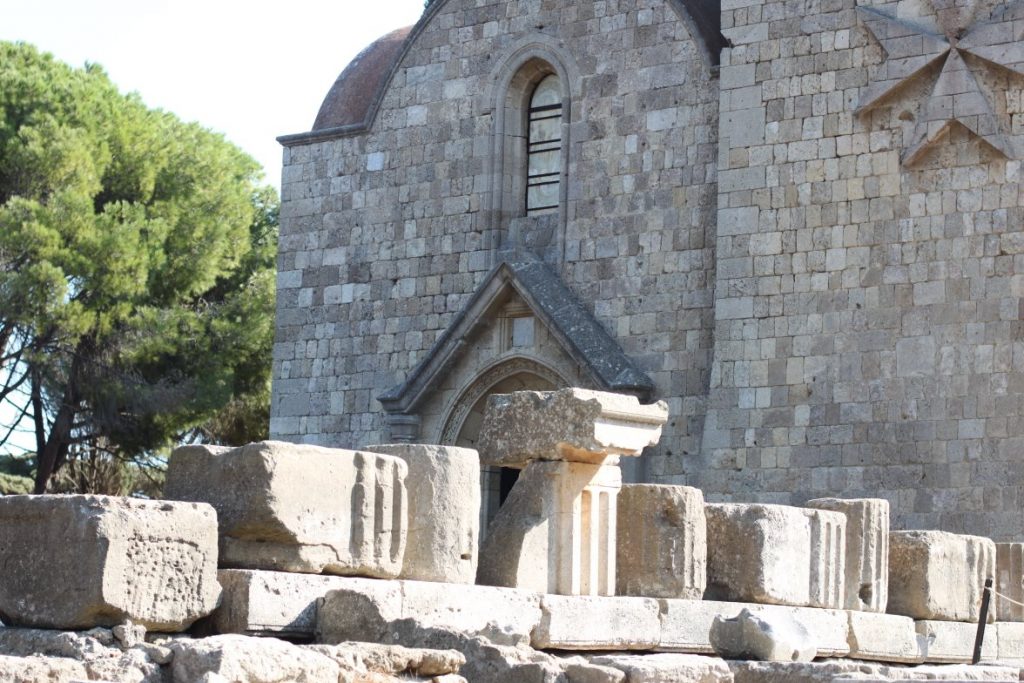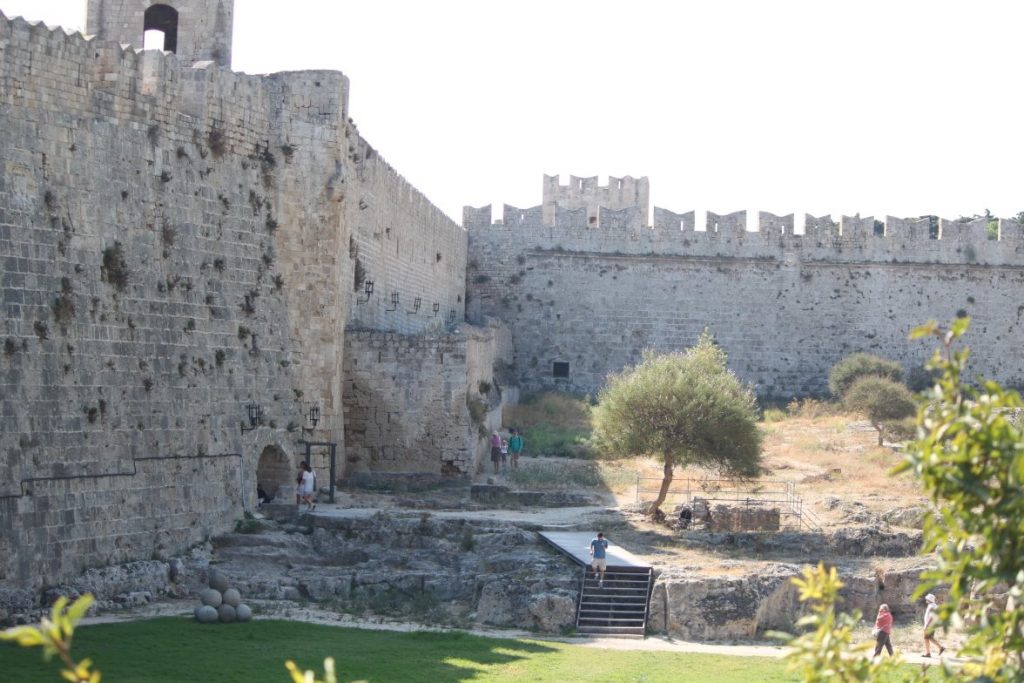We had a smooth passage from Patmos to Rhodes last night. At this port we were able to dock so we did not have to use the tender to get to shore. Rhodes is a much larger port than Patmos. Rhodes city has been here for a long time and there are other locations on the island that have been used since at least 3,300 B.C.
One of those ancient places was the first stop on my tour today. Patricia took a different tour that included cooking lessons—not that she needs them.
We drove around the edge of old Rhodes and had a good view of the walls that go all the way from the port area to the beaches on the west side of the city. Our guide told us we could skip the “new” city, which is about 100 years old and was created by the Italians when they occupied the island for about 30 years after the First World War. Apparently, the Italians saw Rhodes as a potential money maker and did a lot of restoration of Rhodes and built many Rhodes roads. [I could not resist.]
Back to the ancient acropolis… We drove up narrow winding roads to a place with a terrific view of the East end of the island. There was a religious site here dating back to at least 3,300 B.C. Around 800 B.C., the Greeks built a temple at this location. It hasn’t been restored very much but there were piles of pieces that some ambitious person might try to reassemble. Early Christians used the site and there is a baptismal fount there from the 4th century. Now there is a monastery there. It is an unusual church in that on one side there are two Greek Orthodox altars and on the other side two Roman Catholic altars. The fascist Italians said we can do it that way OR we can pull down the church completely. There are beautiful cedar and Cyprus trees lining some of the paths. It wasn’t too busy so I was able to walk around and take pictures. There is more than one acropolis on the island.
We drove back down to the Old Town and visited the castle of the Knights of St. John. These knights were first in Jerusalem and when asked to leave by the Islamic forces in the late 1200s they set up shop in Rhodes where they stayed for about 230 years. Even though their real job was supposed to be the care of the sick, they were also responsible for defense. They built a strong castle in the old town and they must have been expecting trouble because they built a double moat system, one inside the walls and one outside. Unfortunately, they neglect plan far enough ahead to figure out how to get water into the moats, which are about 40 feet above sea level, so they have always been dry. The castle is now a museum that is filled with the history of the Hospitallars. They also built the current set of defensive town walls. The Hospitallars were defeated by the Ottomans in a siege that cost more than 50,000 (mostly Ottoman) lives.
After the tour ended, I walked through part of the Old Town and out of one of the old gates which is called accurately, if not imaginatively, The Gate of the Port and back to the ship. There was a much larger cruise ship tied up near ours. We are happy to be on a ship this size.
Patrica took a different tour that visited another Acropolis before visiting a chef who gave lessons on how to prepare several kinds of Greek food.
We found the ship’s launderette and caught up on that chore. This evening we sat on the Observation deck and watched the ship maneuver from the dock to the sea. Patricia took some pictures of the sunset.
I have posted additional pictures here.


